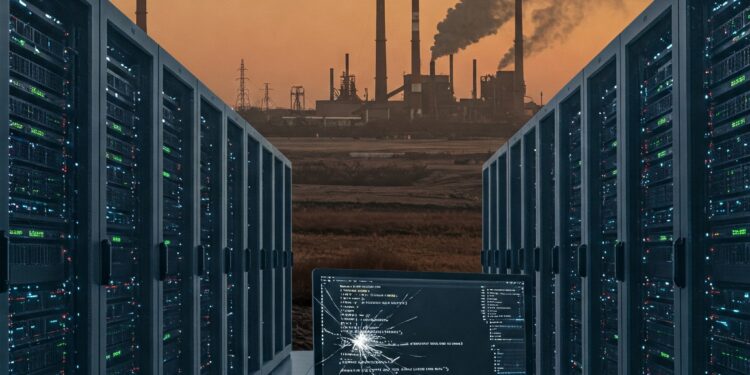When most people imagine carbon emissions, they think of smoke-spewing factories, belching trucks, or oil rigs drilling into the earth. Rarely do they picture sleek software companies—those champions of digital transformation—as major contributors to the climate crisis. But behind every algorithm, app, and cloud-based service lies an invisible but significant carbon footprint.
The Illusion of “Clean” Code
Software products may be intangible, but their operation depends on massive physical infrastructure. Every line of code—whether for a search engine, social media platform, or e-commerce site—is processed, stored, and transmitted through vast networks of data centers. These facilities, the beating heart of the digital age, consume enormous quantities of electricity around the clock to power servers and maintain climate-controlled environments.
According to the International Energy Agency (IEA), data centers alone accounted for approximately 1–1.5% of global electricity use in 2023—a figure expected to rise with the explosion of AI applications, blockchain technologies, and streaming services. If these centers are powered by fossil fuel–based grids, their carbon emissions become deeply embedded in the digital services we use every day.
Cloud Computing: Convenience with a Carbon Shadow
Cloud computing has become the default for businesses and consumers alike. From storing files on OneDrive to hosting video calls on Zoom, cloud-based services are prized for their scalability and convenience. Yet every file uploaded, or video streamed triggers energy use across multiple points in the cloud infrastructure—from local devices to server farms and back.
Large-scale providers like Amazon Web Services, Microsoft Azure, and Google Cloud have begun transitioning to renewable energy, but the pace is uneven. In regions with coal-dominated grids or weak climate regulations, software operations may still rely heavily on carbon-intensive electricity.
Code Efficiency and Emissions: The Role of Software Engineers
It isn’t just hardware that matters. Poorly optimized software can also drive up emissions. Bloated code, inefficient queries, and power-hungry algorithms increase the workload on servers, requiring more computational power and energy. In effect, bad code is bad for the climate.
Take AI training models as a case in point. A 2019 study from the University of Massachusetts Amherst estimated that training a single large natural language model could emit as much CO₂ as five cars over their lifetimes. As generative AI becomes more prevalent in both consumer and enterprise software, the emissions stakes will only grow.
This puts new ethical responsibility on software developers—not only to write clean code but to consider energy efficiency as a performance metric.
The Software Lifecycle: Emissions Beyond the Screen
Software companies also contribute to emissions through their broader supply chains and business operations. Think:
-
Device manufacturing: Software demands constant hardware upgrades, pushing consumers and businesses to replace devices frequently. These upgrades drive emissions through mining, manufacturing, and logistics.
-
Employee travel: Remote work has reduced this somewhat, but international conferences, sales meetings, and global tech summits still contribute travel-related emissions.
-
Digital advertising: The backend infrastructure for targeted ads, real-time bidding, and massive data analytics is energy-intensive—and yet largely invisible to the public.
Toward a Greener Digital Future
The good news? Awareness is growing. Leading software companies are beginning to assess and report their Scope 3 emissions (indirect emissions from their value chains) and investing in carbon removal, green code audits, and renewable-powered operations.
Initiatives like the Green Software Foundation are working to embed sustainability into the software development lifecycle, while open-source tools now help track the energy use of apps and platforms.
But real change requires more than internal policies. Clients, investors, and regulators must demand transparent reporting and low-carbon digital solutions. Just as we’ve learned to ask whether our clothing is ethically made or our coffee sustainably sourced, it’s time to ask: How green is your software?
Why It Matters: As our economies digitize, software companies will play a central role in either accelerating or solving the climate crisis. Recognizing their carbon impact is the first step toward responsible innovation.








